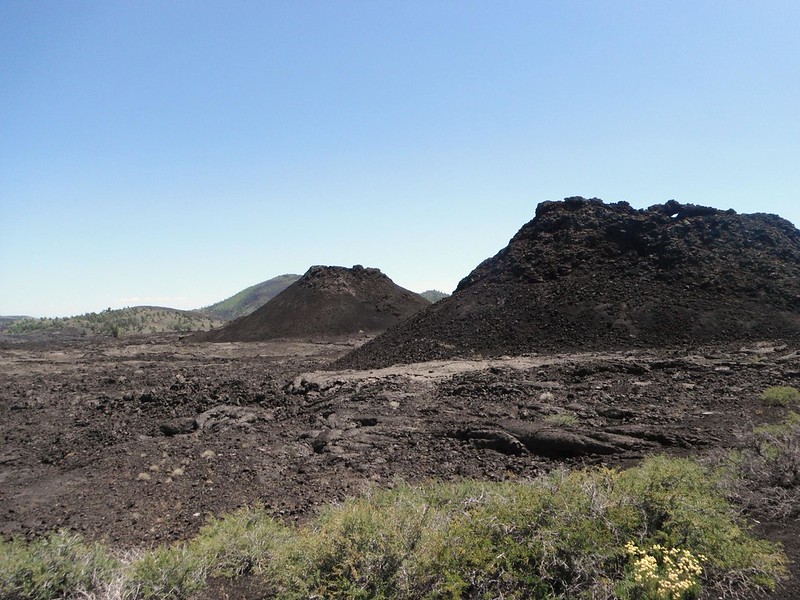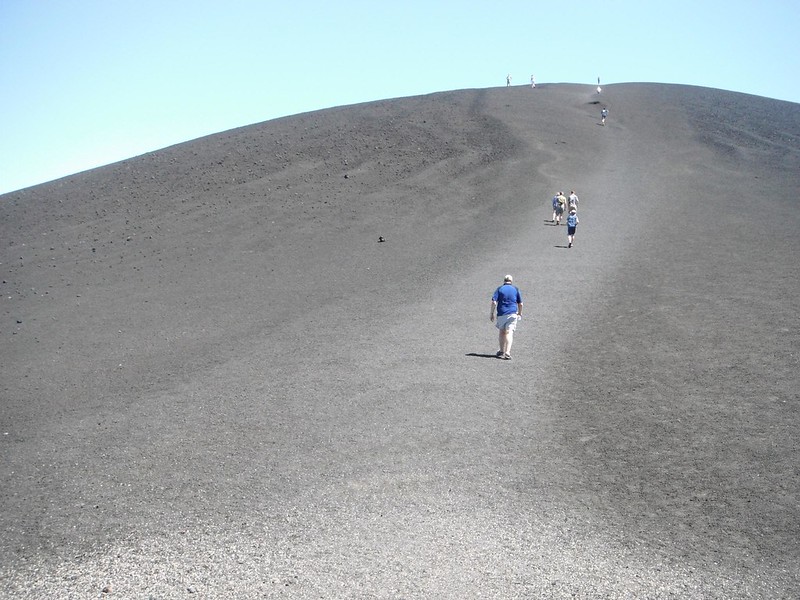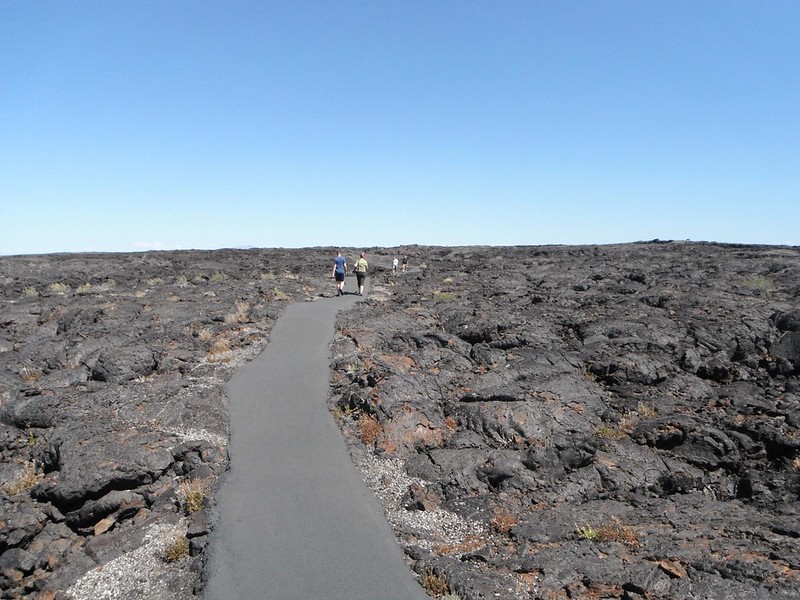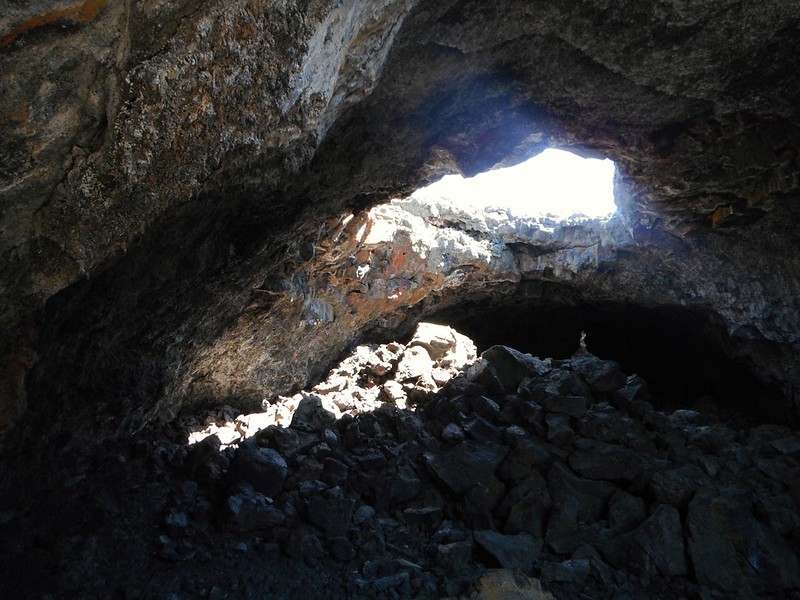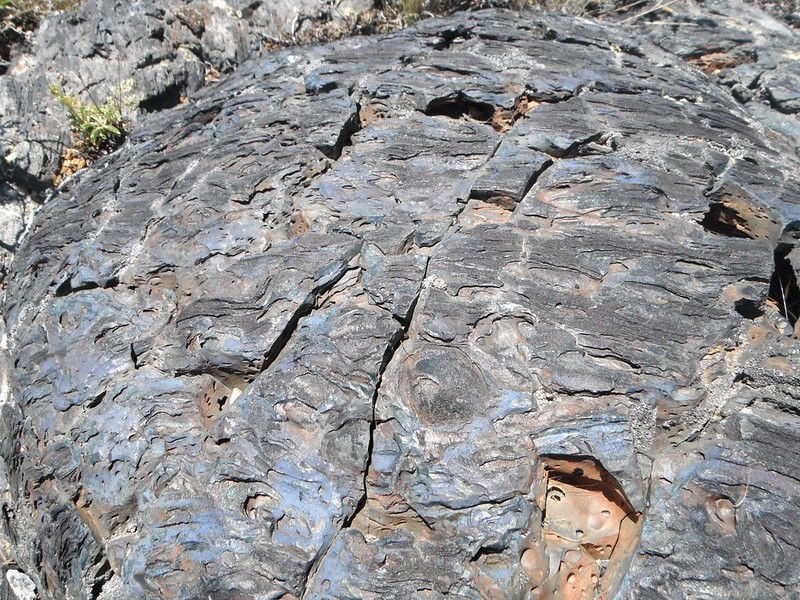I have been watching feed from the Tolbachik volcano on the Kamchtka Peninsula ever since it started to erupt. It has got to be my favorite type of eruption, an effusive fissure eruption. Every summer, I have found myself on the side of some volcanic feature and inspired by Tolbachik volcano, I have decided to write about a few more of my favorites.
Craters of the Moon National Monument
I have driven across the flat and dry volcanic Snake River Plain in southern Idaho several times and always regretted never visiting Craters of the Moon National Monument. It is a little out of the way from the major interstate highways of the USA but then again, so are most of the interesting volcanic features I have visited before. Last summer I got my chance and it was well worth it.
Craters of the Moon National Monument consists of 400 square miles of basalt lava fields originating from a "Great Rift". Eruptions along this rift come from a series of fissures that generate spatter cones and effusive lava flows. There are also a series of monogenic cinder cones some of which, like Inferno Cone (see picture below) can be climbed by the public. The most recent erruption was approximately 2100 years ago.
The expansive and flat lava flows contain tree molds and some of the largest lava tubes I have ever seen.
I was fascinated by a distinguishing and a unique feature of the Blue Dragon flow, the youngest flow in the park. The lava is covered by scales that give off a blue sheen.
Craters of the Moon National monument is at 5900 feet altitude and is almost always windswept. The lack of cover and the heat sink nature of the black basalt can make it also a very hot place to visit. Despite these conditions, I enjoyed my time there very much.
Yellowstone
I have visited Yellowstone at least five times and keep being drawn back. Yellowstone is a fascinating to me not only because of its seemingly endless local volcanic and hydrothermal features but because of the fact that the hotspot which created them, is also responsible for many of the large geologic formations throughout the pacific northwest. These include the flood basalts of Snake River Plain and even the Columbia River Basalt Group, one of the largest trap formations in the world.
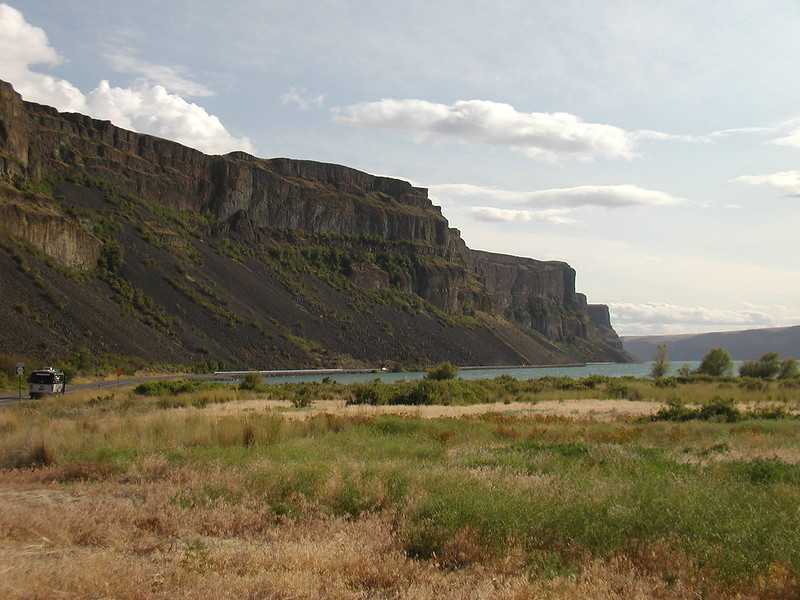 |
| Columbia River Flood Basalts |
When you have seen all of this, calling Yellowstone merely a "super volcano" doesn't seem to justify the magnitude of eruptive material that has been created by this hotspot. It is mind boggling! Yellowstone itself is a series of overlapping and sometimes nested caldera type eruptions on a massive scale. The youngest caldera is filled with the remains of many more recent effusive and sometimes explosive events. Eruptions at the current location has ranged from phreatic to those producing lavas all all varieties, basalt to rhyolite. Yellowstone resides on the continental divide, currently one of the thickest parts of the earths crust on the North American Plate. The massive magma chamber, which was once fed by the hotspot, is still full of plastic hot magma possibly left there from previous eruptions of the distant past. Insulated within the rock of the crust, magma can stay hot for milenia. This magma chamber is at a very shallow depth such that water coming in contact with it has created the world's largest collection of hydrothermal features which include geysers, hot springs, fumaroles, and mud pots. Below is a small sample of some of the geology that can be seen within the park.
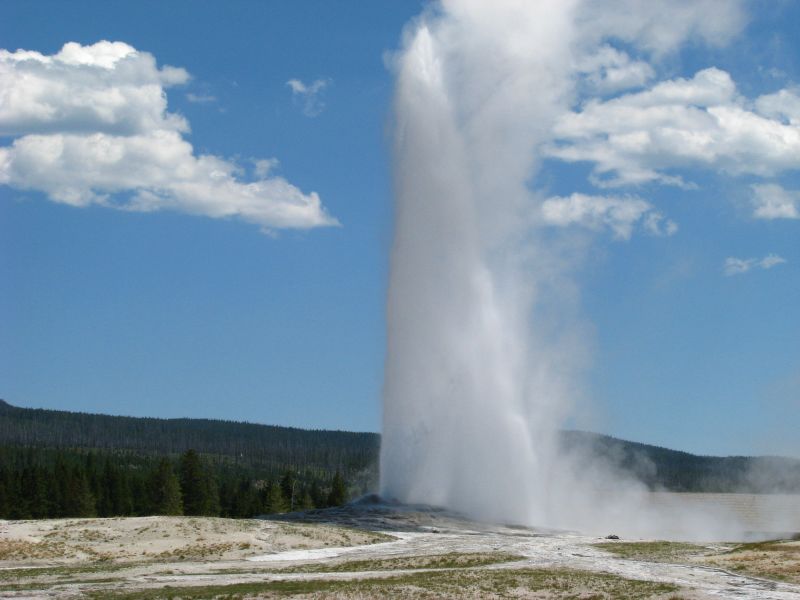 |
| Ubiquitous "Old Faithful" geyser |
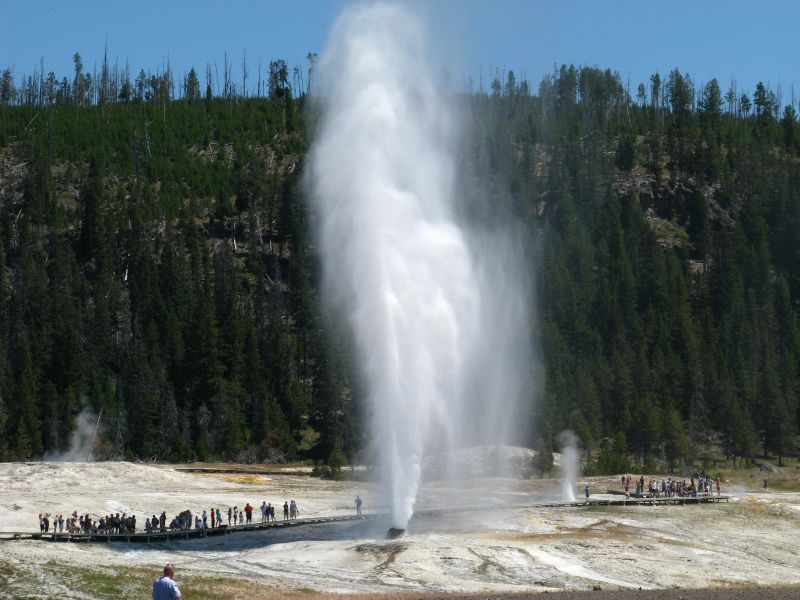 |
| Upper Geyser Basin Path |
|
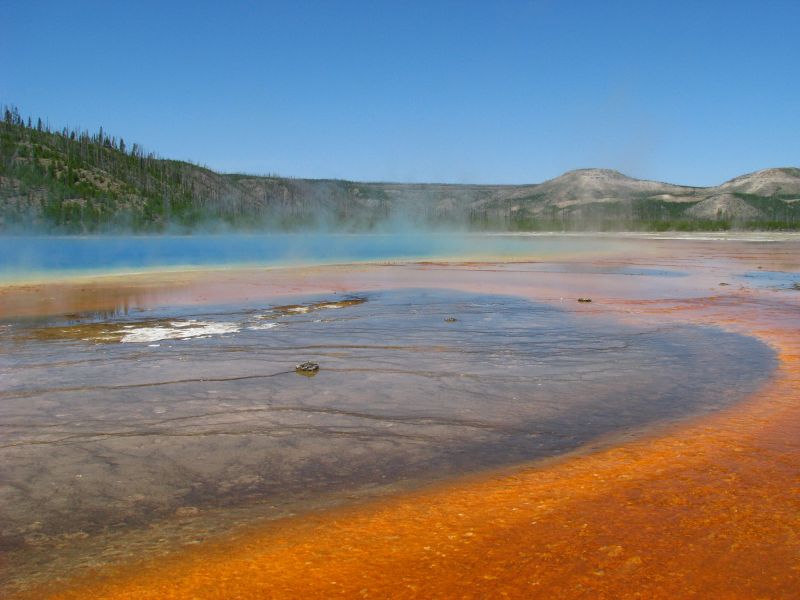 |
| Grand Prismatic Spring |
 |
| Mammoth Hot Springs |
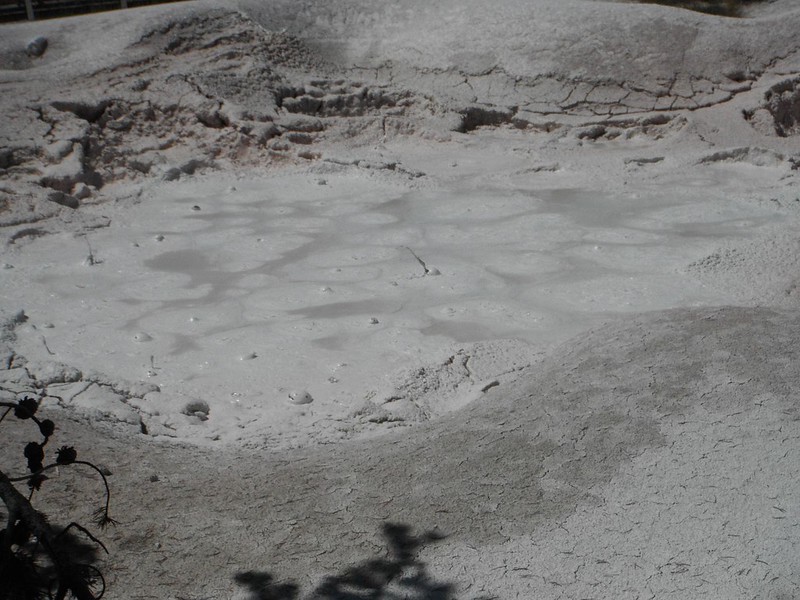 |
| Fountain Paint Pots boiling mud pond |
 |
| Roaring Mountain Fumarole Field |
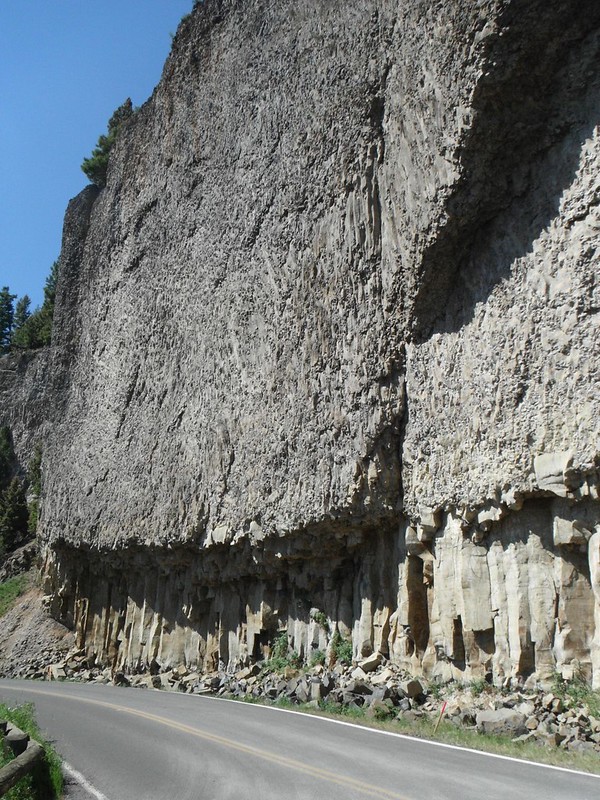 |
| Overlapping columnar lava flows at Watch Tower Falls |
|
|
There are two resurgent domes within the Yellowstone caldera which have been growing lately. This has been a source of concern amongst sensationalist media types but they are a common feature in most active calderas around the world. Resurgent domes are known to inflate and deflate routinely and are not a good indicator of an imminent volcanic eruption. The National Park Service and the USGS (United States Geologic Survey) monitor the volcano constantly with various types of sensors. There has not been any sign of a significant increase in sulfur dioxide emissions or increased seismic tremors(earthquake) in focused swarms, key indicators of a possible eruption. Experts say that the likelihood of a big Yellowstone eruption is 1/730,000 every year. I hope this debunks some of the fear generated by media...sorry doomsday preppers!
Aside from the geology, I also love visiting Yellowstone for it's rustic charm, abundant wildlife, and beautiful mountain vistas. Yellowstone is just too large to see everything in one trip.
Newberry Caldera/Volcano and Medicine Lake Volcano
Although these two volcanoes reside in two different states, they are both situated just east of the Cascade Range and volcanic arc, they are both essentially shield volcanoes with extensive associated monogenic cindercone fields, they are both atypical shield volcanoes in that they have produced both basalt flows at lower elevations and rhyolite flows at higher elevations, and they both have lakes within their calderas. It is likely that both have multiple small magma chambers rather than just one. Both of these volcanoes seem to be on an area of crustal extension with eruptive vents running along fault lines moving from the oldest in the southeast to the youngest in the northwest. The last eruption at Newberry was approximately 1400 years ago and the last eruption at Medicine Lake was approximately 900 years ago.
I had the pleasure of camping inside Newberry Caldera next to East Lake. Newberry is in central Oregon. The caldera itself is filled with obsidian shards from various rhyolite flows and this can make walking in unsuitable footwear treacherous. There are several hot springs along the sides of both lakes in Newberry Caldera.
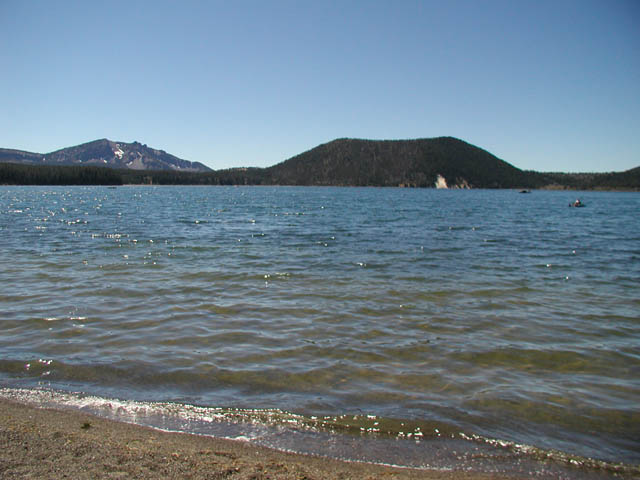 |
| Central Pumice Cone across East Lake |
|
 |
| Big Obsidian Flow |
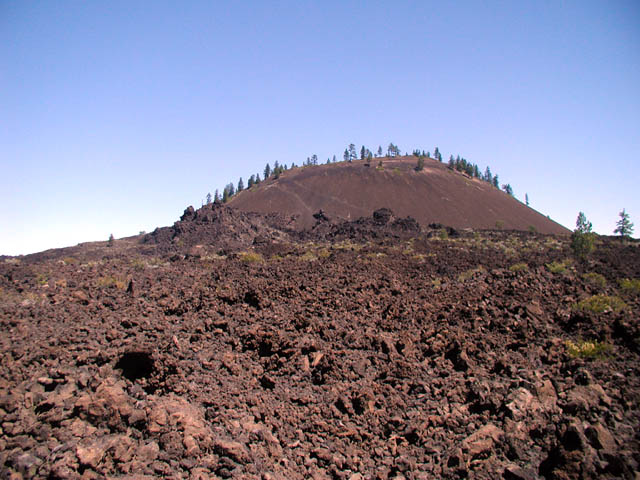 |
| Lava Butte |
Medicine Lake Volcano is in northern California and has Lava Beds National Monument on its northern slope.
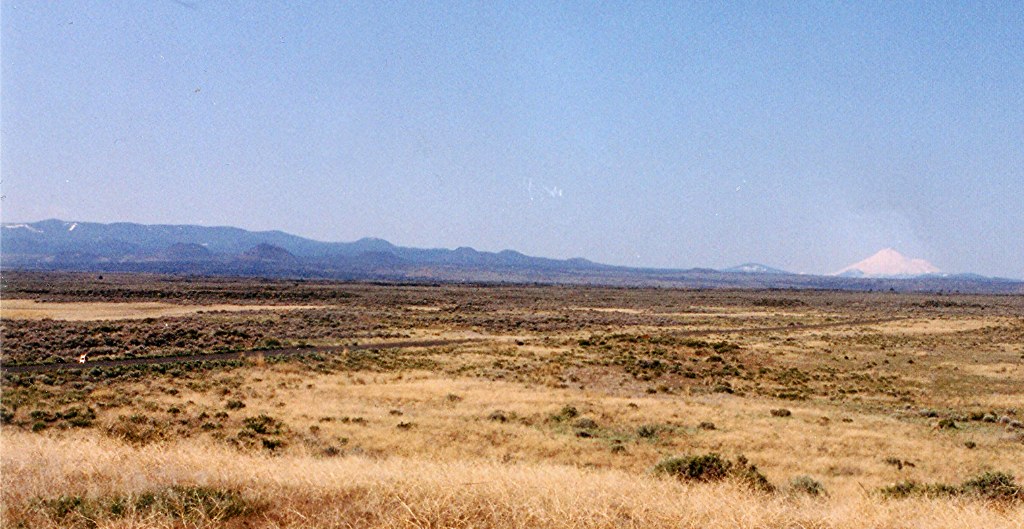 |
| Medicine Lake Volcano on the left and Mt Shasta distant right |
This volcano is well off the beaten path but its numerous lava tubes makes it a destination for adventurous spelunkers. I discovered this monument more by coincidence than on purpose as it was on my planned route to Reno one spring. In Lava Beds National Monument the final battles of the Modoc War (or Lava Beds War) were fought between the local native American Modoc tribe and the US army in 1873. The lava beds were known as Captain Jack's (the Modoc leader) Stronghold and the lava tubes and ridges provided an effective defense during the two battles which were fought in them. The combination of history and geology has made Lava Beds National Monument a fondly remembered destination for me.
 |
| Devil's Homestead Lava Flow |
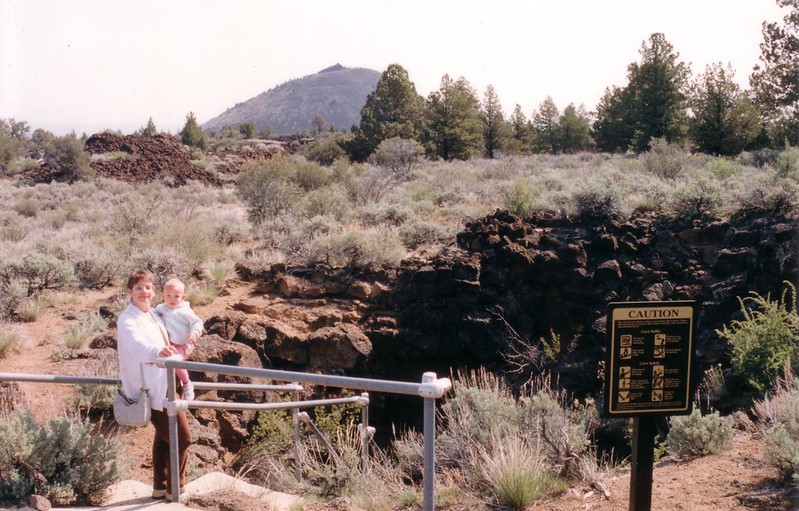 |
| Lava tube entrance with Schonchin Butte cinder cone behind |
|
Stay tuned for more volcano goodness as I have visited many others and I intend to see many more.














